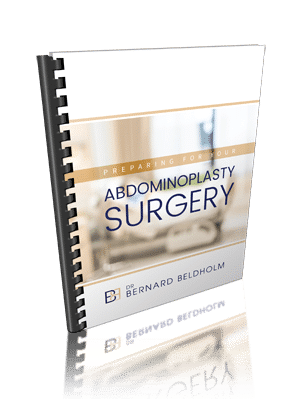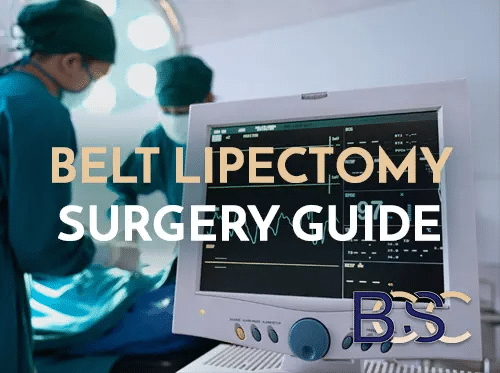Top 8 Post Pregnancy Body Concerns and How to Treat Them
After vaginal birth or cesarean delivery, new mothers experience dramatic physical changes, particularly in the abdominal area. Common concerns include loose skin, perineum soreness, skin changes, loose mons pubis, stretch marks, separation of the abdominal muscles, weak pelvic floor muscles, and persistent protrusion. As the body recovers, these health conditions can impact a woman’s functional integrity and overall well-being, leaving many new moms feeling tired and overwhelmed.
Concern #1: Post-Pregnancy: Mons Pubis
The mons pubis is the fatty tissue mound on the lower pelvic region, typically covered by pubic hair in adult females. Often overlooked in discussions about female anatomy, the mons pubis goes through significant changes during pregnancy. This area of fatty tissue is essential for both function and appearance. However, hormonal shifts and stretching of the abdominal wall during pregnancy can cause excess fat in the pubic region. This leads to an unattractive bulge.
According to a study published in the National Library of Medicine, approximately 35-50% of women experience some degree of loose skin or excess fat deposition in the mons pubis region following pregnancy. This statistic underscores the prevalence of post-pregnancy changes in this area and highlights the importance of this concern for many women.
Understanding the reasons behind mons pubis is crucial for developing effective treatments. While physical changes during pregnancy are common postpartum concerns like this requires a comprehensive approach that combines surgical procedures with targeted therapies.
Options like a tummy tuck (also known as abdominoplasty) can help lift and tighten the mon pubis, while liposuction (suction-assisted lipectomy) can remove excess fat from the area. Surgery alone is not always enough. Lifestyle changes such as regular exercise and a healthy diet can help maintain composition and support long-lasting outcomes.
Non-invasive treatments like radiofrequency and laser technology also offer alternatives for tightening the mons pubis without surgery.
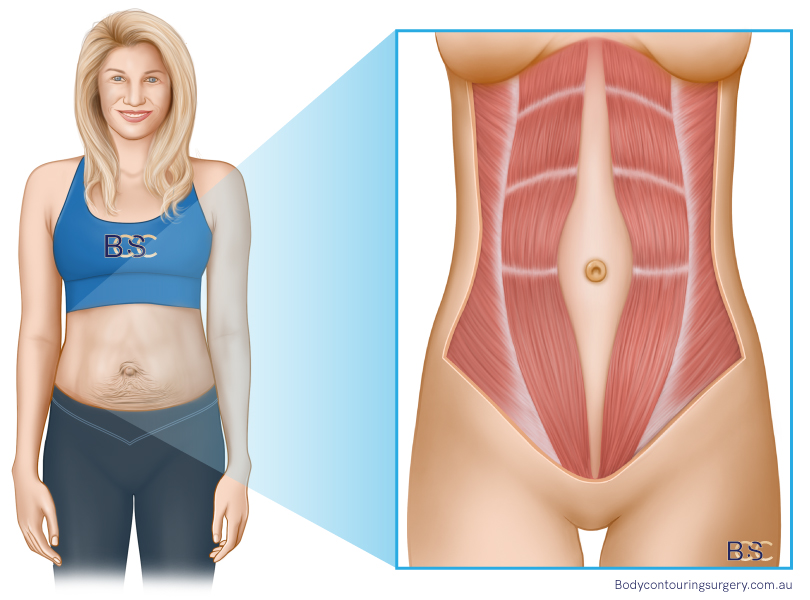
Physical symptoms to abdominal muscles several weeks postpartum
Concern #2: Diastasis Recti (muscle separation)
Diastasis recti is common in pregnant and postpartum individuals when the rectus abdominis muscles separate along the linea alba. This separation happens when the core muscles, which provide stability and support, become stretched during pregnancy. The separation can continue after giving birth, causing a noticeable bulge in the abdomen that can impact appearance and functionality.
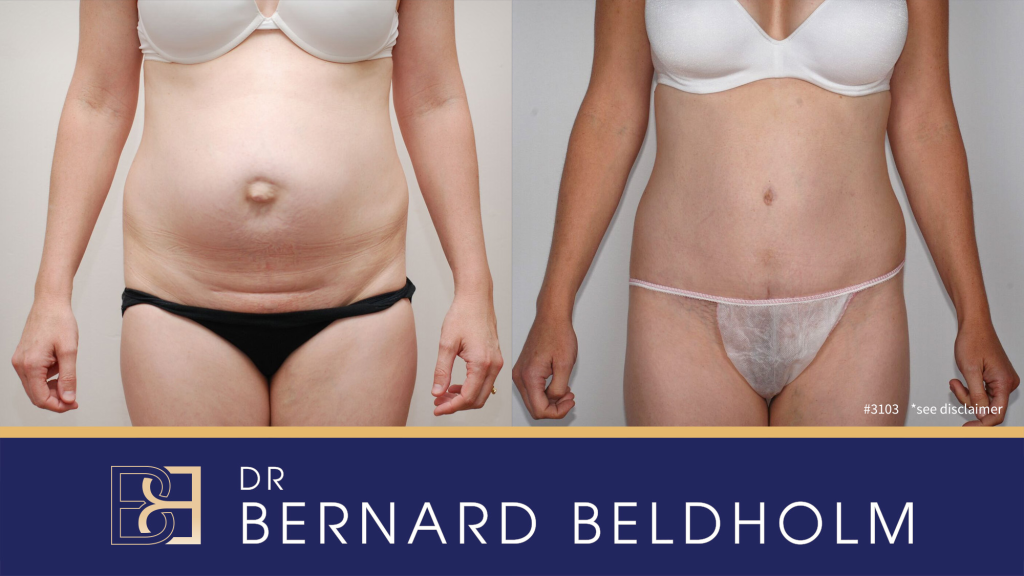
Diastasis recti | B&A for abdominoplasty with repair of diastasis recti | BCSC
Disclaimer: Operation performed by Dr Bernard Beldholm. Adult content, surgery has risks; individual results vary, seek 2nd opinion. Please see the full disclaimer.
Research indicates that diastasis recti affects up to 60% of women during pregnancy and can persist in more than a third of individuals at six months postpartum.
Dr. Bernard Belholm, MBBS B.Sc (MED), FRACS, Founder of Body Contouring Surgery Clinic Pty Ltd and specialist surgeon, emphasises that diastasis recti is a prevalent condition that can have a significant impact on a person’s quality of life. The separation of the abdominal muscles can lead to abdominal bulging, functional impairments, and self-consciousness, affecting both physical and mental health.
The possible lasting effects of diastasis recti go beyond just appearance. Most women with untreated diastasis recti may have an increased likelihood of experiencing issues such as urinary incontinence and pelvic organ prolapse due to a dysfunction of pelvic floor muscles. These long-term effects highlight the significance of identifying and diastasis recti early on to prevent negative impacts on pelvic health. The patient might as well consider pelvic floor physical therapy during such time.
Thankfully, surgeries like abdominoplasty, commonly known as a tummy tuck, can effectively treat diastasis recti after pregnancy. Dr. Beldholm explains that during this procedure, the rectus abdominis muscles are carefully repaired and tightened to increase abdominal strength and structure. Tightening the abdominal muscles helps with back pain and core instability.
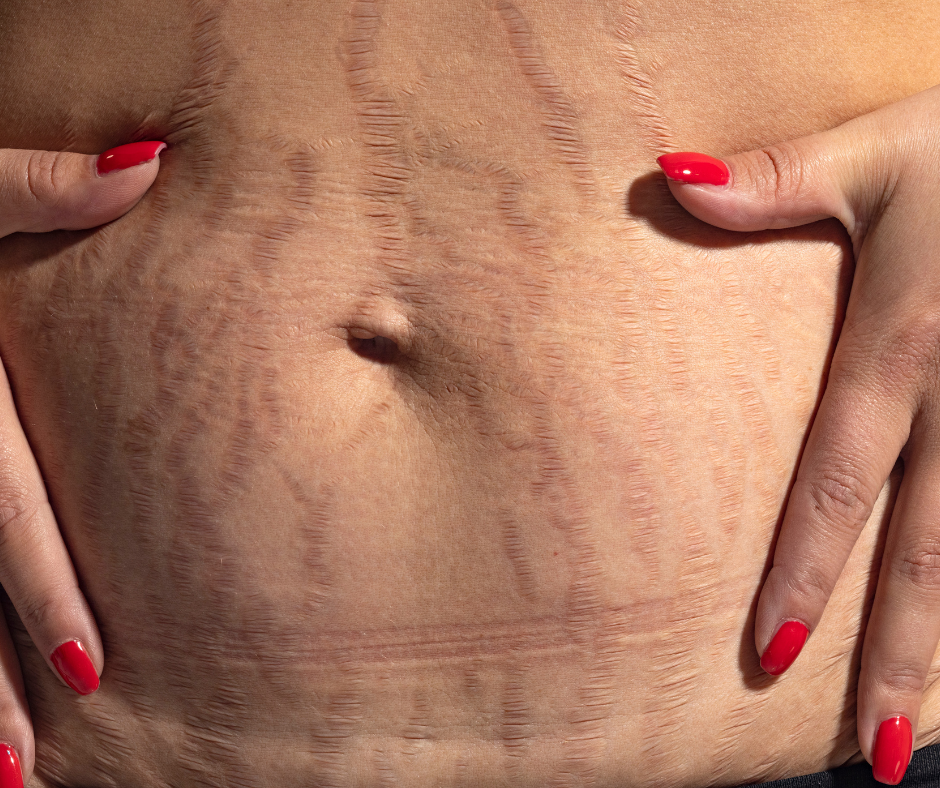
Many new moms develop stretch marks once returning to a healthy weight
Concern #3: Stretch Marks
Stretch marks, also known as striae gravidarum, are one of the common complications of pregnancy for women after giving birth. The degree and appearance of stretch marks differ among women, but they can significantly affect one’s body image. Treating stretch marks requires a multifaceted approach.
Preventing stretch marks is the first step in avoiding their formation. Keeping the skin hydrated and supple is essential to maintain elasticity and resilience. It’s important for pregnant moms to drink plenty of water and apply moisturising lotions or oils to help increase skin hydration, reducing the chances of developing stretch marks during pregnancy. Silicone sheets also prevent existing stretch marks from worsening by creating a protective barrier over the skin.
Adding topical retinoids to your skincare routine after giving birth (These should not be used when pregnant or breastfeeding) could help with stretch marks. It is, however, essential to talk to a certified doctor before using retinoids, especially while breastfeeding or if you are thinking about having more children.
Once stretch marks have formed, they can be challenging to remove. They may initially appear dark brown or red but often fade over time. Dr. Beldholm recommends advanced treatments like LED Light Therapy, Laser Genesis, Microdermabrasion, and Acid Peel Treatment to reduce the appearance of scars and stretch marks.
Concern #4: Loose Abdominal Skin
Many women opt for abdominoplasty surgery primarily because pregnancy commonly causes excess abdominal skin. When a woman is pregnant, her skin stretches significantly to make room for the growing baby. However, the skin may not fully tighten back up after giving birth. This leads to loose skin on the stomach. While natural skin tightening may happen within the first two years postpartum, persistent laxity beyond this timeframe often requires surgical treatment.
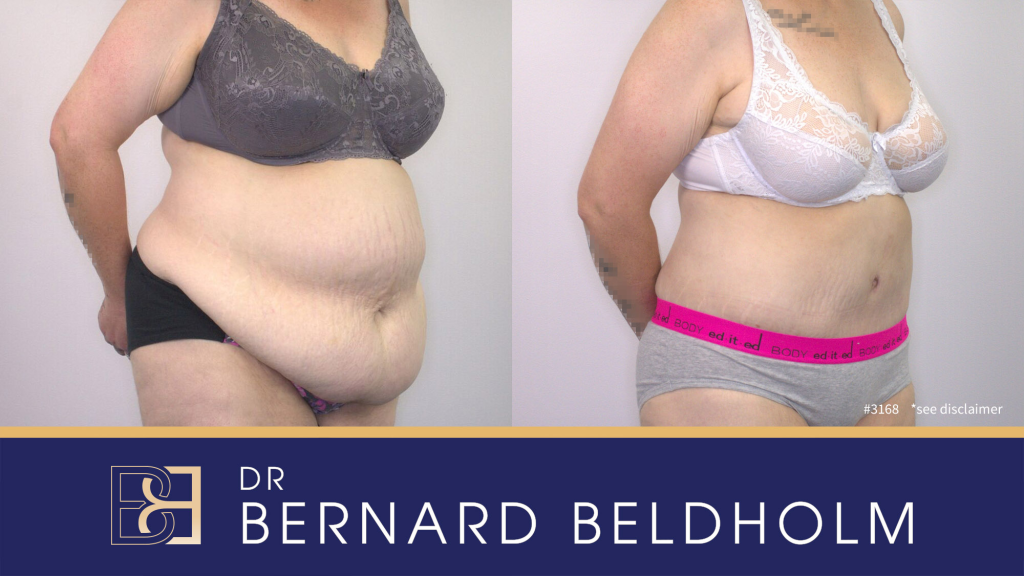
B&A abdominoplasty post pregnancy | BCSC
Tattoo (upper right chest & Right arm) blurred for privacy
Disclaimer: Operation performed by Dr Bernard Beldholm. Adult content, surgery has risks; individual results vary, seek 2nd opinion. Please see the full disclaimer.
Abdominoplasty offers an effective solution to loose abdominal skin. This procedure removes extra skin and tightens muscles.
There are different types of abdominoplasty. A mini abdominoplasty treats mild to moderate skin laxity below the belly button. For those looking for overall result, fleur-de-lis and extended abdominoplasty can target loose skin around the entire torso. These different abdominoplasties cater to individual aesthetic goals and needs after pregnancy.
“Every woman’s body is unique, and a customised approach ensures optimal results. Your consultation is an opportunity to explore your options and create a treatment plan aligned with your needs,” explains Dr. Beldholm.
Moreover, he explains, “Postpartum, we often see a distinction between loose skin and stretched skin. While both can occur concurrently, loose skin typically refers to skin that has lost its elasticity and hangs loosely, whereas stretched skin results from significant expansion beyond its normal capacity, often accompanied by visible stretch marks. Understanding this difference is crucial in developing personalised treatment plans.”
Concern #5: Stretched Skin Around the Umbilicus
During pregnancy, the expanding uterus places significant pressure on the abdominal wall, causing the skin to stretch and accommodate the growing foetus. As a result, the skin around the belly button may undergo considerable stretching, leading to laxity and wrinkling. Genetics, weight gain, and multiple pregnancies can aggravate the degree of skin laxity, resulting in a visibly stretched appearance around the umbilicus.
For those looking to repair stretched skin around the umbilicus in a lasting way, umbilicoplasty provides a surgical procedure to reshape and refresh the look of the navel. This surgery involves removing extra skin and giving the belly button an aesthetic appearance. The surgeon can create a natural and balanced belly button that complements the rest of the abdomen by carefully suturing surrounding tissues.
In cases where surgical intervention may not be warranted or desired, non-surgical treatment like radiofrequency therapy or chemical peels can provide alternative options. They help the appearance of stretched skin around the belly button. Radiofrequency therapy utilises heat energy to stimulate collagen production and tighten the skin, which results in a smoother and firmer texture.
Some women have stretched skin that extends beyond the belly, resulting in loose skin. Opting for abdominoplasty surgery is ideal for restoring your pre-pregnancy body.
Concern #6: C-Section Scars
C-section scars are a common concern among women who have undergone caesarean deliveries. The scars are a result of incisions made on the lower abdomen during the surgical procedure. While C-section scars are a natural outcome of childbirth, many women look for ways to reduce the visibility of these scars.
Treatment options for C-Section scars include:
- Silicone sheet or gel to flatten and soften the scar tissue. These sheets are applied directly to the scar and worn for several hours daily.
- Scar massage breaks down collagen fibre, leading to a smoother and less noticeable scar.
- Topical creams and ointments containing ingredients like vitamin E or hyaluronic acid can help the appearance of C-section scars by promoting healing and reducing inflammation.
- Laser therapy like fractional laser resurfacing or intense pulsed light therapy can target the pigment in the scar, leading to lightening of the scar.
It is essential to consult with a surgeon to determine the most suitable treatment option based on the type, size, and location of the C-section scar. Some women have had more than one c-section birth which can lead to multiple scars.
Concern #7: Weak Abdominal Muscles
After giving birth, many women experience weakened abdominal muscles due to the stretching and separation that occurs during pregnancy. Weaker abdominal muscles can negatively affect the body and its functions, including poor posture, lack of stability, back pain, and pelvic floor problems. The impact of muscle weakness can significantly affect one’s ability to resume daily tasks and impact one’s well-being. It is essential to recognise the effects of this condition and take steps to target this issue.
Strengthening the abdominal muscles can have significant benefits, as it prepares the body to handle the physical demands of pregnancy and aids in a more resilient recovery.
Rehabilitation exercises are vital for strengthening and restoring weakened abdominal muscles after pregnancy. Exercises like pelvic tilts, bridges, and abdominal bracing help engage core muscles, stability and muscle tone. Including pelvic floor exercises like Kegels can also increase core strength and promote pelvic health. Working with a healthcare provider to gradually increase the intensity and frequency of these exercises can help rebuild abdominal strength and function effectively.
In cases of severe abdominal muscle weakness, abdominoplasty is a surgical option. During abdominoplasty, the surgeon repairs and tightens the abdominal muscles.
Take Away
If you share any of the above concerns and want to learn more about surgical options, book a consultation with Dr. Beldholm. At Body Contouring Surgery Clinic, Dr. Beldholm can tailor a treatment plan to discuss your specific concerns.
References
- Vesting, S., Olsén, M. F., Gutke, A., Rembeck, G., & Larsson, M. (2021). Clinical assessment of pelvic floor and abdominal muscles 3 months postpartum: an inter-rater reliability study. BMJ Open, 11(9), e049082.
- Blankensteijn, L. L., Hockx, M., Mullender, M. G., Bouman, M., & Melenhorst, W. B. W. H. (2023). Clinical significance of diastasis recti: Literature review and awareness amongst health care professionals. Journal of Plastic, Reconstructive & Aesthetic Surgery, 84, 439–446.
- Keeler, J., Albrecht, M., Eberhardt, L., Horn, L., Donnelly, C., & Lowe, D. A. (2012). Diastasis recti abdominis. The Journal of Women’s & Pelvic Health Physical Therapy, 36(3), 131–142.
- Kream, E., Boen, M., Fabi, S. G., & Goldman, M. P. (2021). Nonsurgical postpartum abdominal rejuvenation: a review and our experience. Dermatologic Surgery, 47(6), 768–774.
- Stupak, A., Kondracka, A., Fronczek, A., & Kwaśniewska, A. (2021). Scar Tissue after a Caesarean Section—The Management of Different Complications in Pregnant Women. International Journal of Environmental Research and Public Health, 18(22), 11998.
- Faustino, L. D., Cruciol, F. S., Motoki, T. H. C., Figueiredo, I. V., Garcia, A. F. E., Nahas, F. X., & Ferreira, L. M. (2023). Treatment and Prevention of Umbilical Sagging with Laser-assisted Liposuction: The New Happy Protocol. Plastic and Reconstructive Surgery – Global Open, 11(6), e5022.
- Hameed, M. S. S., Wright, A., & Chern, B. S. M. (2023). Caesarean scar pregnancy: Current understanding and treatment including role of minimally invasive surgical techniques. Gynecology and Minimally Invasive Therapy, 12(2), 64–71.
- Jameel, K., Mannan, G. A., Niaz, R., & Hayat, D. (2021). Caesarean scar Ectopic Pregnancy: a diagnostic and Management challenge. Cureus.
- Sally, R., Shaw, K. S., & Pomeranz, M. K. (2021). Benign “lumps and bumps” of the vulva: A review. International Journal of Women’s Dermatology, 7(4), 383–390.
- Wollina, U., & Goldman, A. (2017). Management of stretch marks (with a focus on striae rubrae). Journal of Cutaneous and Aesthetic Surgery, 10(3), 124.
